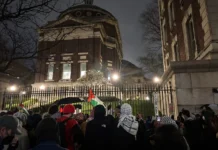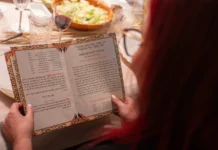This study of Jews in Wales, by Cai Parry-Jones and published by University of Wales Press, is the first nationwide historical survey of Judaism in Wales since the first Jewish community was established in 1768. Minority groups such as the Jews, along with groups such as Christadelphians and Jehovah’s Witnesses have tended to be routinely ignored by Welsh historians, and this volume is an important contribution to a seldom studied and rarely described part of our national picture. Whilst the number of Jews in Wales reached no more than 5,000 at its peak in 1917, their fate reflects not only the changing nature of the Jewish community but that of industrial and war-scarred Wales in this period.
The book outlines the roots of immigration and settlement in Wales and the particular patterns of religious and communal life in Wales’s Orthodox Jewish communities. It charts the impact persecution in Nazi-occupied Europe and the Second World War had on Wales and its Jewish people, and lastly examines the decline and the endurance of Wales’ Jewish communities through the end of the twentieth and beginning of the twenty-first century.
British historians of the Jewish communities in Britain have tended to marginalise those communities in Wales, and Parry-Jones sets out his mission as making a history of Welsh Jewry, rather than as part of a British Jewry. He draws on the ambiguity of the Jewish experience in Wales and portrays the relationship between the Jewish and the host community as one of balance and complexity. It is neither a ‘sombre tale of failure and enervation’ nor a ‘successful and peaceful’ story of tolerance and understanding. Scholars such as Grahame Davies and Jasmine Donahaye have emphasised the exchanges between Jews and non-Jews in Wales, but this volume is the first to examine the histories of Jewish communities and individuals scattered throughout Wales.
This history charts the development of Jewish communities in Wales from the first evidence in 1768. It echoes some other studies which have concentrated on the Jewish community in Swansea, Cardiff and Newport, and along the north Wales coast, but Parry-Jones also examines in greater detail the growth of the smaller Jewish communities that followed the industrialisation of the south Wales valleys, including Tredegar, where Wales’ only anti-Jewish riots took place in 1911. As he points out, south Wales was unique in Britain in terms of how its Jewish communities concentrated in one geographical area; between Ebbw Vale and Merthyr, an estimated sixteen communities were founded in the late nineteenth and early twentieth centuries. But the author is anxious to emphasise that the Jewish experience in Wales should not be seen either as a constant struggle against anti-Semitism, where the Tredegar riot is seen as its sole distinguishing feature, nor as the anodyne story of growth and achievement.
The author highlights the ambivalent nature of Welsh responses to Judaism. For instance, he features Lloyd George’s Nonconformist sentimentality that led him to feel an affinity with the ‘people of the book’, but who also believed the conspiracy theory that the Boer War was fought on behalf of cowardly Jewish gold-mine and diamond -mine owners. Saunders Lewis’ anti-Jewish sentiments reflected the unfounded belief that rootless international Jewish finance were controlling the economic affairs of nations to their ends, and in his poem ‘Y Dilyw’ (‘The Deluge’), he described the alleged role played by the New York Jewish financiers in the 1929 Wall Street Crash. Yet, as Parry-Jones points out, his attitudes were more complex, and nuanced and differentiated between Jewish financiers and Jews more generally. Lewis protested vehemently against the treatment of Jews by Hitler in the thirties and sustained his condemnation of the Nazis ‘as something akin to madness’.
These two instances illustrate the complicated relationship in Wales between the ‘host community’ and Judaism, and a different aspect is given by individual Jews such as Kate Bosse Griffiths, who became an important beacon of the Welsh national movement. She escaped German persecution to set up the Egyptology Centre at Swansea University, become an extremely active nationalist and an early member of Cymdeithas yr Iaith (the Welsh Language Society).
The contemporary portrayal of the Jewish community in Wales is one of inevitable decline. But the recent revival of its congregations in Bangor and Rhyl are living proof of its vitality in north Wales, and in south Wales, a continuing in-migration of Jewish hospital workers, academics and civil servants and students hold the hope that vibrant Jewish communities will continue into the 21stcentury.
This book should be warmly welcomed as a most substantial contribution to the history of Jews in Wales. The author should be complimented on the depth of his original research, including a great number of interviews with members of Jewish communities in Wales. As the first historian to delve into British Jewish archives, he does not shirk from the negative aspects of the relationship with the host community, but gives a judicious and perceptive insight into Wales’s treatment of its minorities.
Aled Eirug was BBC Wales Head of News and Current Affairs from 1992-2003 before becoming adviser to the Presiding Officer of the National Assembly from 2006-2011.


























